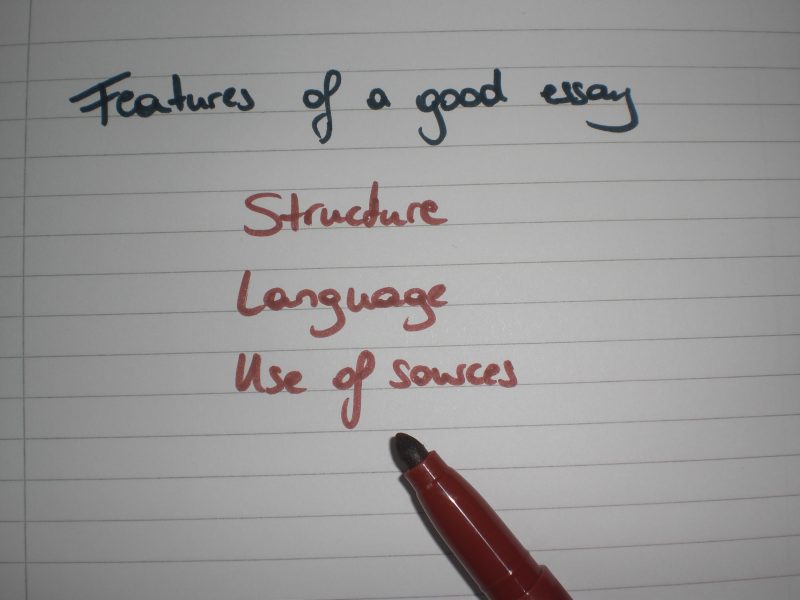At academic level, essays, reviews and assignments are the end product of a long process that involves thinking, listening, reading, gathering ideas, drafting and redrafting, discussing and editing. Often this process is cyclical regarding its stages, but basically should always include a planning, writing and editing process.
 When writing an academic essay you will need to consider the following key elements: structure, language, use of sources and critical engagement.
When writing an academic essay you will need to consider the following key elements: structure, language, use of sources and critical engagement.
Structure:
Your essay should have an introduction, a main body and a conclusion. The introduction should prepare the reader for what you want to communicate. The main body will lay out your arguments with relevant references to support and discuss your ideas. And the conclusion should provide a brief summary of your main points.
Within each part you need to make sure that you use sentences, paragraphs, subheadings and/or numbering systems to guide your readers through your thought processes.
Language:
You must use formal language. This means that you are not using contractions, such as don’t, shouldn’t or won’t. Also you must be careful with your use of expressive words (really, awful).
Instead you are expected to use vocabulary that is specific to your field of study and that demonstrates that you understand key terms. Try to avoid abbreviations or acronyms, as they may sometimes be very specific to your working environment and may not necessarily be universally known amongst the people who read your essays.
Use of sources:
Good academic writing includes using ideas of others. However, you must provide information about your sources, as not doing so is plagiarism (stealing from others), whether your “unlawful borrowing” was intentional or unintentional.
There are several ways of using sources, with the most common ones being direct quotations and indirect quotations.
Direct quotations are text passages that you copied and pasted and you are highlighting the part with quotation marks. Indirect quotations involve changing sentences and wording, summarising key ideas and combining arguments. Usually, the indirect quotations demonstrate more clearly that you have understood what your sources are telling you and are therefore preferred within academia; this is usually referred to as synthesising ideas. However, if you are not careful about your rewording of phrases you may unintentionally plagiarise.
One way to help you avoid plagiarism, but to ensure that you are working with sources is to consider the use of reporting verbs such as describe, find, report, suggest, observe, argue, demonstrate, propose, point out, highlight, show, think, explain, note, analyse, claim, summarise.
Read more about in-text referencing and writing a bibliography.
Critical engagement:
Good academic writing is much more than summarising facts and describing key points; but being critical does not mean criticising your sources either.
Being critical in regards to and engaging critically with literature means that you do not simply accept what the sources say; you make judgements about how a text is argued and that you look for ways of thinking about the topic. You should consider the central claims and purpose of the text; you should consider the context in which the text was written; and you should consider the evidence the text employs.